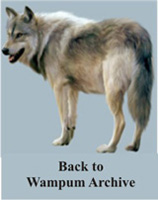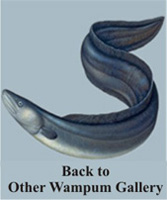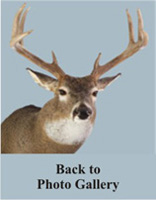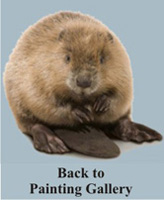 |
 |
Photographs (left to right): Sunset, Albuquerque, New Mexico; Silver Pennies, Rush, New York; Tent Rocks National Monument, New Mexico
Wampum Belt Archive
Nipissing Belts
After Versailles Natural History Cabinet

MBAA 853 50 74
![]()
R. D. Hamell December 14 2021
Original Size: |
Rows: 6. Length: 35.0 inches. |
Reproduction: |
Beaded Length: 36.0 inches. Width: 3.5 inches. Length w/fringe: 60.0 inches. |
Beads: |
Columns: 228. Rows: 7. Beads: 1,368. |
Materials: |
Warp: Deer leather. Weft: Artificial sinew. Beads: Polymer. |
![]()
MBAA 853 50 75
![]()
R. D. Hamell December 14 2021
Original Size: |
Rows: 6. Length: 94 cm. 37 inches. |
Reproduction: |
Beaded Length: 34.0 inches. Width: 3.5 inches. Length w/fringe 58.0 inches |
Beads: |
Columns: 215. Rows: 6. Beads: 1,290 |
Materials: |
Warp: Deer Leather. Weft: Artificial Sinew. Beads: Polymer |
Description:
Two diplomatic belts were sent to the kings of France by the Nipissing, an Algonquin nation near Montreal allied with France (1714 and 1720. One presented to Louis XIV via the missionary René-Charles de Breslay according to an archival document dated May 7, 1714, describing “pledges with a belt [presented] to his Majesty as a token of their word and loyalty”. Its main purpose was to assure the king of Nipissing support in the conflict with the Renard [Mesquakie] nation (ANOM B36V fol. 383v, 384).
Breslay sent the second belt six years later. This event was recorded by the Nouveau Mercure gazette, which reported Breslay appearing on the Seine in a birch bark canoe with two Algonquins and a boy from California and his subsequent audience with Louis XV on January 8, 1720, when he handed over the “wampum belt” and passed on the Nipissing promise it embodied (Anon 1720: 38, 40). It is not known where the two belts, presented by the same nation just a few years apart, were then stored. Two single belts with geometric white patterning on a purple background are now held by the Musée des Beaux-Arts et d’Archéologie in Besançon.
The uniform weaving and homogeneous size of the beads suggest they may have been made by the same crafters (Stolle 2016: 5, table 5, 265 ff.); the purple background could mean they were made by French allies. They are known to have been in Besançon since the 19th century, though nothing further is known of their provenance: it is hypothesized that they were among items confiscated by revolutionaries around Paris, particularly the collection of Louis XVI’s younger brother Charles-Philippe de Bourbon, comte d’Artois, later Charles X.
References
ANOM (National Overseas Archives, Aix-en-Provence) B36 F, 1714 “To Monsieur de Vaudreuil on the subject of the king’s response to the Nepissiris and the 500-pound gratuity granted to Monsieur de Breslay (7 May 1714)”: fol. 383-384.
Regueiro, Paz Núñez and Nikolaus Stolle. 2022. Wampum: the pearls of diplomacy. Gradhiva, vol. 33.
Zehnacker, Françoise and Nicolas Petit. 1989. Le Cabinet de curiosités de la bibliothèque Sainte-Geneviève, catalogue d’exposition. Paris, bibliothèque Sainte-Geneviève.
 |
 |
 |
 |
 |
 |
 |
 |
|---|